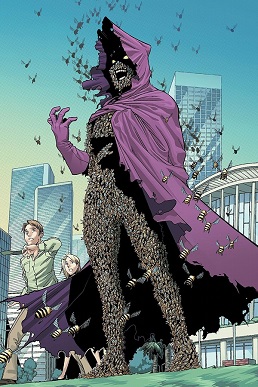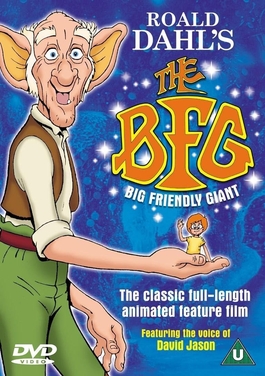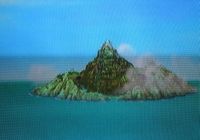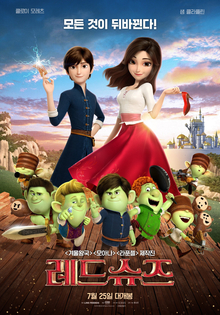Plot
Ben Fields, married to Francesca Fields, is an entomologist seeking a lab assistant. Regina, a giant mutant queen bee in human form, who is searching for a human mate to evolve her species, takes the job. Regina is accepted into their household after fabricating a story of accused infidelity by her 'former' employer's spouse, whom she chose to keep anonymous to prevent anyone from knowing about the alleged affair. When the subject of drones comes up, Regina is oddly enthusiastic about the beauty of the bee's mating ritual and the willingness of the drones to die in the process. Suspicious of her background, while being treated with disrespect and contempt by Regina, Francesca discovers Regina has lied; as well as seeing her abruptly morphing into a giant bee while apparently drawing nectar from a flower in their garden. At one point, due to the metabolic changes while in human form, Regina experiences spasms of pain, and is examined and treated by the Fields' personal physician, who reveals to them his belief that Regina may not be who she appears to be. Later, with her knowledge of Regina's attempts to seduce her husband, Francesca confronts her, whereupon Regina unleashes the bees of her hive kept in Ben's laboratory, attacking and then stinging Francesca to death. Ben, grief-stricken, accuses Regina of murdering his wife. Now understanding and horrified by her true identity and purpose, he forcefully rejects her advances, and gives her his view of the human mating ritual, in contrast to her earlier statements. In an ensuing struggle, she falls from his bedroom's second story balcony to the ground below. She is not killed, transforms back into a queen bee, then flies off.

Through the Looking-Glass, and What Alice Found There is a novel published on 27 December 1871 by Lewis Carroll, a mathematics lecturer at Christ Church, University of Oxford, and the sequel to Alice's Adventures in Wonderland (1865). Alice again enters a fantastical world, this time by climbing through a mirror into the world that she can see beyond it. There she finds that, just like a reflection, everything is reversed, including logic.

A honey bee is a eusocial flying insect within the genus Apis of the bee clade, all native to mainland Afro-Eurasia. After bees spread naturally throughout Africa and Eurasia, humans became responsible for the current cosmopolitan distribution of honey bees, introducing multiple subspecies into South America, North America, and Australia.

The honey bee life cycle, here referring exclusively to the domesticated Western honey bee, depends greatly on their social structure.

A queen bee is typically an adult, mated female (gyne) that lives in a colony or hive of honey bees. With fully developed reproductive organs, the queen is usually the mother of most, if not all, of the bees in the beehive. Queens are developed from larvae selected by worker bees and specially fed in order to become sexually mature. There is normally only one adult, mated queen in a hive, in which case the bees will usually follow and fiercely protect her.

A drone is a male bee. Unlike the female worker bee, a drone has no stinger. He does not gather nectar or pollen and cannot feed without assistance from worker bees. His only role is to mate with a maiden queen in nuptial flight.
Queen Bee is the name of six different characters appearing in American comic books published by DC Comics.

Queen of Outer Space is a 1958 American science fiction film shot in DeLuxe Color and CinemaScope. Produced by Ben Schwalb and directed by Edward Bernds, it stars Zsa Zsa Gabor, Eric Fleming, and Laurie Mitchell. The screenplay by Charles Beaumont, about a revolt against a cruel Venusian queen, is based on an idea supplied by Ben Hecht and originally titled Queen of the Universe. Upon its release, the film was promoted by Allied Artists and distributed to some locations as a double feature with Frankenstein 1970 starring Boris Karloff.

Swarm is a supervillain appearing in American comic books published by Marvel Comics. The character's entire body is composed of bees, and is mainly featured as an enemy of Spider-Man.

Roald Dahl's The BFG, or simply The BFG, is a 1989 British animated fantasy adventure made-for-television film directed by Brian Cosgrove from a screenplay by John Hambley, based on the 1982 novel The BFG by Roald Dahl.
"Corpus Earthling" is an episode of the original The Outer Limits television show. It first aired on 18 November 1963, during the first season.

Haplodiploidy is a sex-determination system in which males develop from unfertilized eggs and are haploid, and females develop from fertilized eggs and are diploid. Haplodiploidy is sometimes called arrhenotoky.

Apis nigrocincta is a species of honey bee that inhabits the Philippine island of Mindanao as well as the Indonesian islands of Sangihe and Sulawesi. The species is known to have queens with the highest mating frequencies of any species of the tribe Apini.

Noah's Island is a British animated television series for children made by the creators of The Animals of Farthing Wood and commissioned by the European Broadcasting Union. It was directed by Emile Bourget, Philippe LeClerc, Alan Simpson, and Frederic Trouillot, with the episodes written by Steve Walker. Each of the 39 episodes ran for 28 minutes. Although not as successful as Farthing Wood, it was fairly popular on Saturday mornings in many British households, particularly with its younger demographic. Inspired by the Bible story Noah's Ark, the series was praised for its characterization, imaginative storylines and for introducing ecological themes.

Apis dorsata, the rock bee or giant honey bee, is a honey bee of South and Southeast Asia. They are typically around 17–20 mm (0.7–0.8 in) long and nests are mainly built in exposed places far off the ground, like on tree limbs, under cliff overhangs, and under buildings. These social bees are known for their aggressive defense strategies and vicious behavior when disturbed. Though not domesticated, indigenous peoples have traditionally used this species as a source of honey and beeswax, a practice known as honey hunting.

Rogue Queen is a science fiction novel by American writer L. Sprague de Camp, the third book in his Viagens Interplanetarias series. It was first published in hardcover by Doubleday in 1951, and in paperback by Dell Books in 1952. A later hardcover edition was issued by The Easton Press in its The Masterpieces of Science Fiction series in 1996; later paperback editions were issued by Ace Books (1965) and Signet Books. A trade paperback edition was issued by Bluejay Books in June 1985. The first British edition was published in paperback by Pinnacle Books in 1954; a British hardcover reprint followed from Remploy in 1974. The novel has been translated into Portuguese, Italian, French and German. An E-book edition was published by Gollancz's SF Gateway imprint on September 29, 2011 as part of a general release of de Camp's works in electronic form.

The Little Foxes is a 1941 American drama film directed by William Wyler. The screenplay by Lillian Hellman is based on her 1939 play The Little Foxes. Hellman's ex-husband Arthur Kober, Dorothy Parker and her husband Alan Campbell contributed additional scenes and dialogue.

The western honey bee or European honey bee is the most common of the 7–12 species of honey bees worldwide. The genus name Apis is Latin for "bee", and mellifera is the Latin for "honey-bearing" or "honey carrying", referring to the species' production of honey.

Apis cerana, the eastern honey bee, Asiatic honey bee or Asian honey bee, is a species of honey bee native to South, Southeast and East Asia. This species is the sister species of Apis koschevnikovi and both are in the same subgenus as the western (European) honey bee, Apis mellifera. A. cerana is known to live sympatrically along with Apis koschevnikovi within the same geographic location. Apis cerana colonies are known for building nests consisting of multiple combs in cavities containing a small entrance, presumably for defense against invasion by individuals of another nest. The diet of this honey bee species consists mostly of pollen and nectar, or honey. Moreover, Apis cerana is known for its highly social behavior, reflective of its classification as a type of honey bee.

Red Shoes and the Seven Dwarfs, known in Korean as simply Red Shoes, is a 2019 English-language South Korean animated fantasy film produced by Locus Corporation. It is based on the 1812 German-language fairy tale "Snow White" by the Brothers Grimm, and its name is derived from the 1845 Danish fairy tale The Red Shoes by Hans Christian Andersen. The film features the voices of Chloë Grace Moretz, Sam Claflin, Gina Gershon, Patrick Warburton, and Jim Rash.
















